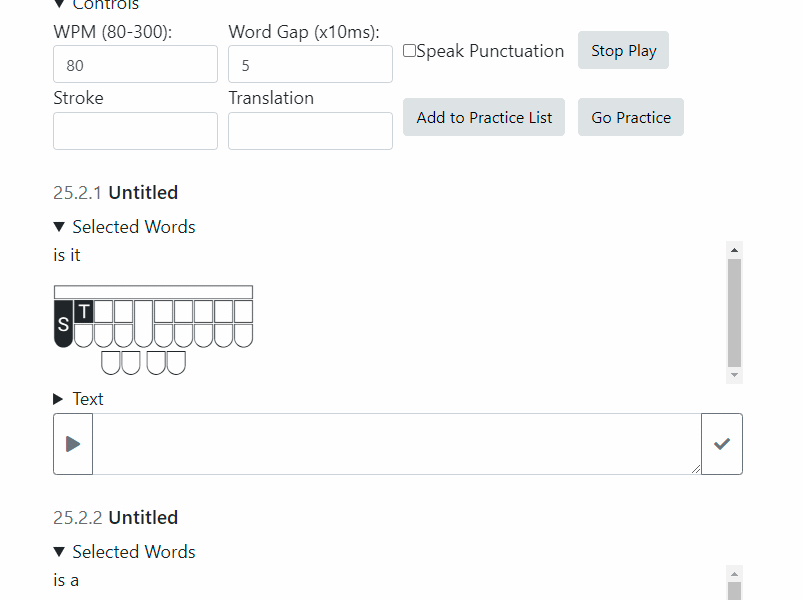Introduction
This is a work under construction.
That means there will be typos. The sections cover the beginning
Plover concepts but are missing the prefix and suffixes.
Any suggestions and/typos reports would be very welcome.
You can find me in the Plover discord as plants.What is Stenography?
As technology improved, stenography – shorthand writing – has expanded from pen and paper to machines and the computer. Steno experts can write faster with less effort using a specialized 23-key keyboard than a QWERTY keyboard.
This resource focuses more specifically on how to write steno with Plover, an open-source stenography engine from the Open Steno Project.
Quick Start
See the changelog for updates.
Read the theory for each section. The theory here is brief1. For a detailed explanation of Plover theory, I find Learn Plover! very useful. For anybody who already knows the steno layout, starting with the exercises for one-syllable words is probably more useful.
Write in the text boxes, and check the input for errors highlighted in green (insertion errors) and red (deletion errors) on the website. Play the audio by clicking the play button and write along. Use the floating controls to control speed of synthesized audio. Add words and corresponding strokes to the practice list as needed (such as briefs for more repetition practice). Then go to practice to practice and remove entries as desired.

At the bottom of most sections is a widget that randomizes sentences from the chapter and synthesizes audio for writing using meSpeak.js. There are word speed and gap controls which control both the audio of the randomized sentences and also for the individual sentences. As the minimum WPM speed is 80WPM, to slow down the rate even further, the word gap can be increased. Synthesis takes a few seconds to finish before audio starts playing. The randomized sentences are initially hidden in order to write by ear.
Consider practicing the dictations. Some sections will have links to dictations using the theory concept. For more on these text dictations, see 32.1.
A writer may want to start with simple dictations (32.1), practice homonyms (14, more homonyms in the exercises of these sections: 17, 19), or practice with advanced dictations (33, 34) if they know their theory already.
This entire work is more similar to a “practice test bank” than a proper text book. A section and the exercises are NOT designed to be completed in one sitting. In fact, most sections cover multiple concepts, each of which may take multiple hours of class and practice time in a stenography course.